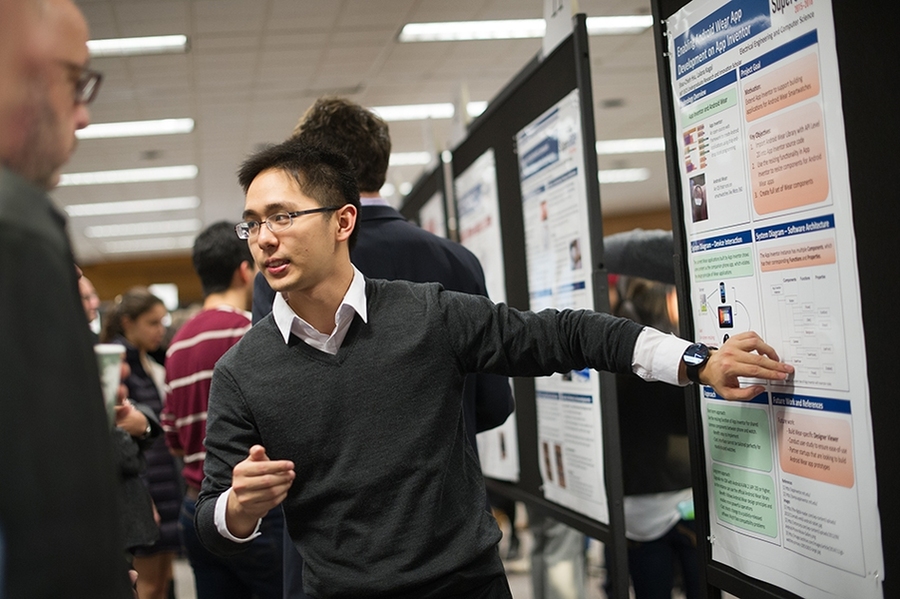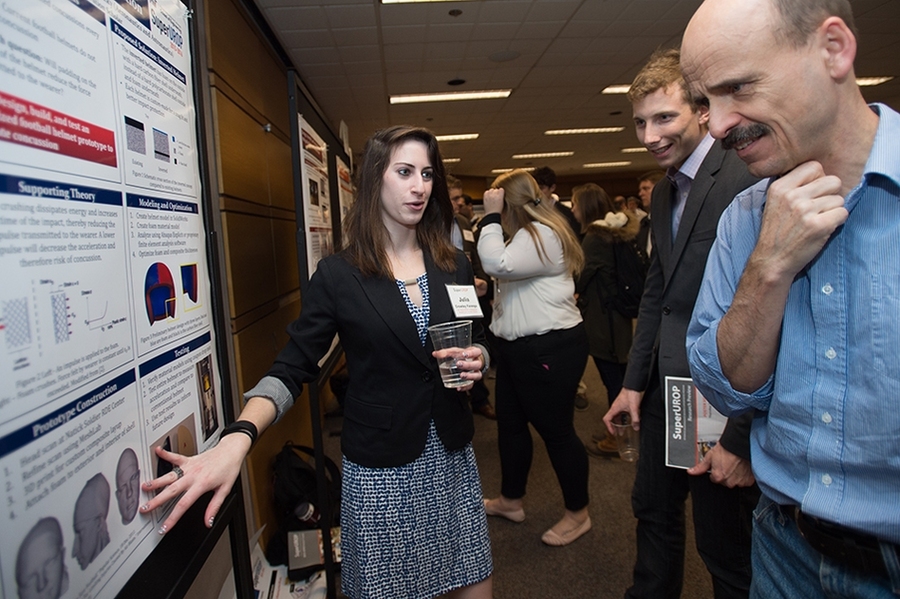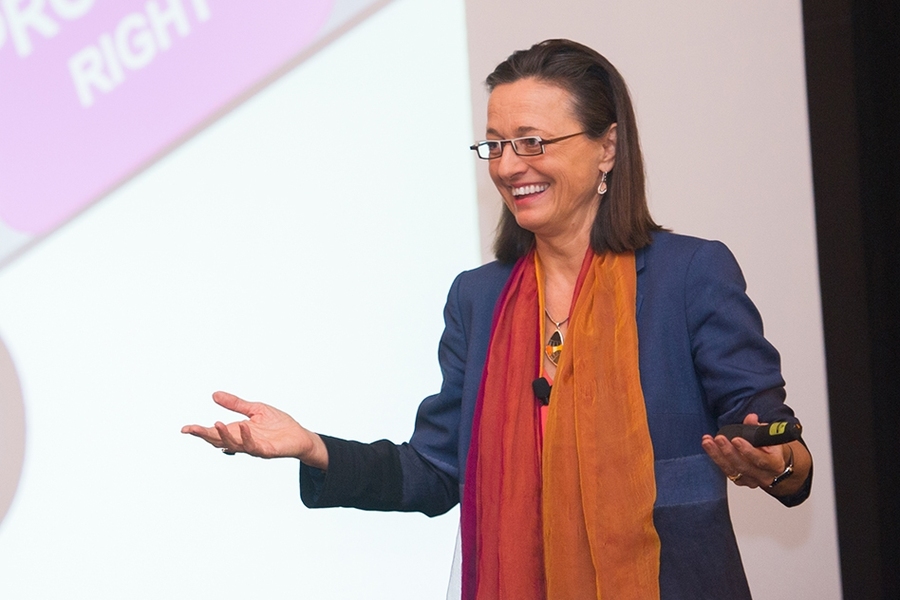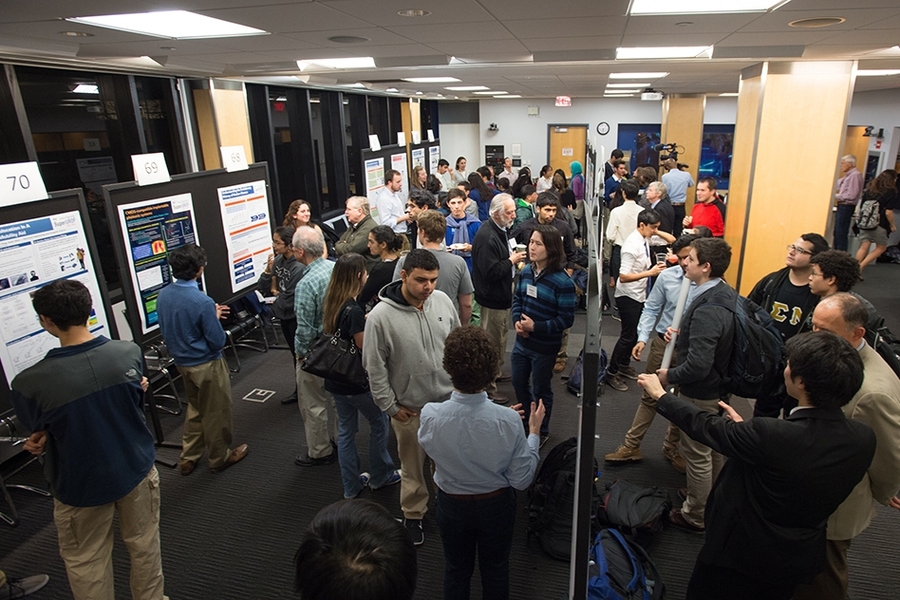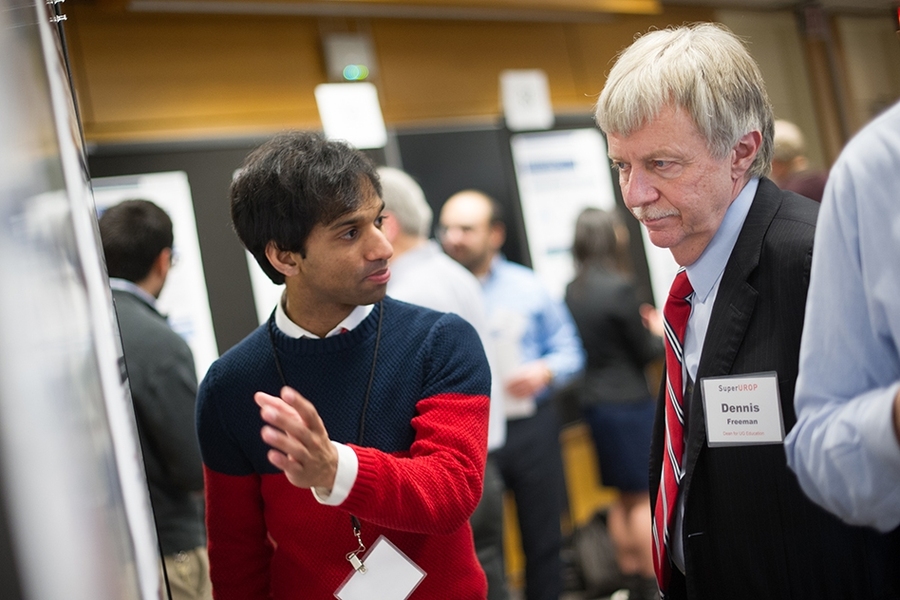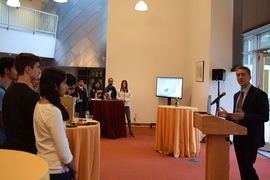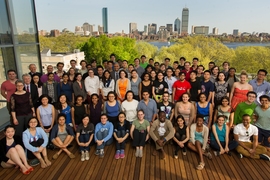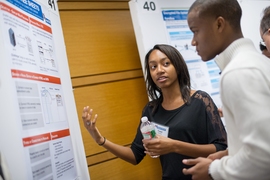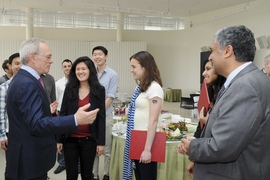Innovation is about solving the right problem at the right time, Sophie Vandebroek, Xerox’s chief technology officer, told an audience of students participating in the School of Engineering’s SuperUROP program on Thursday.
“You have to focus on who is the user for your technology and what is the right problem to solve,” said Vandebroek, who is also president of the Xerox Innovation Group. “In the early 1970s, we had a color copier. It was amazing technology. There was just one problem: There were very few color originals.”
Today, Xerox sends experts into hospitals, schools, cities, and other environments to observe users, she noted — making sure the right problem is solved early in the innovation process.
This lesson was one of many learned during her 25 years at Xerox that Vandebroek shared in her keynote speech at the SuperUROP Research Preview. Earlier in the afternoon, the 180 undergraduates in the program presented a sneak peak of the research projects they have been working on since September.
SuperUROP, an expanded version of MIT’s Undergraduate Research Opportunities Program, or UROP, gives undergraduates the opportunity to complete year-long graduate-level research projects under the supervision of MIT faculty and researchers. Launched in 2012 in the Department of Electrical Engineering and Computer Science (EECS), the program encourages students to focus on real-world problems, and SuperUROP projects often lead to a published research paper or new prototype.
Tackling the hard problems
For his SuperUROP research, Bradley Walcher is working on a football helmet design to reduce the risk of concussion. Walcher, a junior studying aeronautics and astronautics, notes that concussions are a real issue for football players — an estimated 15 percent of football players get a concussion every year. The prototype Walcher and colleagues are developing uses an inverted cushioning structure and 3-D printing to produce a snug fit.
“I took SuperUROP because I want to go to grad school,” Walcher says, “and this has given me the experience of doing higher-level research, which is hard to do as an undergraduate.”
Christian Argenti, a junior studying mechanical engineering, is working on a compression bandage design for treating venous leg ulcers. Currently, healthcare professions don’t have a good indication of the pressure being placed on a wound — a problem because there is an ideal pressure range for the healing process. Argenti is working on polymer-coated fibers that change colors as stretched, indicating the amount of pressure the bandage applies.
Argenti has been working in the Lab for Bio-inspired Photonic Engineering in the Department of Mechanical Engineering for two years, and says SuperUROP gave him an opportunity to take a deeper dive into research. “I love SuperUROP because it gave me a bigger project to work on. It really helped me be independent as well as challenging me with projects like the poster session and writing papers.”
In addition to conducting research, students enroll in a yearlong course, 6.UAR (Preparation for Undergraduate Research), where assignments include conducting a literature review, writing a journal or conference-style research paper, and presenting a research poster.
Flora Tan, a senior studying computer science, is applying machine learning to financial data — an idea that is just beginning to be applied in the financial industry. Tan’s project uses deep-learning techniques to identify and perhaps predict trends in the Bitcoin market.
“I’m interested in how technology can disrupt industries like finance, and I’d like to start a company or technology team in the future,” Tan says. “SuperUROP has given me a chance to spend time getting a deep understanding of the technologies being used today.”
Stepping outside the box
The 2015-2016 SuperUROP class is the first to include students from departments across the School of Engineering.
“We hope to create an interdisciplinary community of scholars,” said Anantha Chandrakasan, the Vannevar Bush Professor of Electrical Engineering and Computer Science and EECS department head. “It is amazing to see the enthusiasm and innovative ideas that emerge as they interact with their peers in their own and other areas.”
One of the new departments participating in SuperUROP this year is the Department of Aeronautics and Astronautics, where students are working on projects ranging from biometric telemonitoring for astronauts to airfoil-enabled heat exchangers to reduce fuel burn in advanced aeropropulsion systems.
"SuperUROPs are a fantastic opportunity for AeroAstro undergraduates to step 'outside the box' and work with industry, faculty, and grad students on exciting, real-world challenges,” said Jaime Peraire, AeroAstro department head and the H.N. Slater Professor Aeronautics and Astronautics.
In her keynote, Vandebroek advised students that stepping into unfamiliar territory in their research and careers is an essential part of innovating. “When you take risks, when you really push boundaries, it can be scary,” Vandebroek said. “But you have to remember that where there is danger there is also opportunity.”
Vandebroek’s most important innovation lesson of all? “Coming up with new ideas and changing the world is hard work. Don’t forget to have fun while you’re doing it.”
